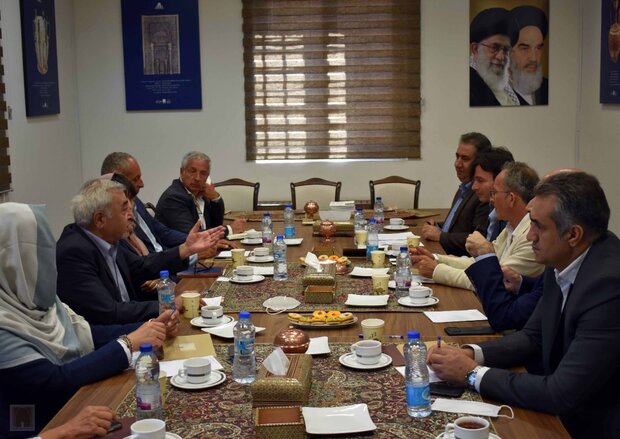TEHRAN—The National Museum of Iran on Tuesday said it has negotiated with Italy’s Salento University to explore ways to foster collaboration.
On Sunday, Jebrael Nokandeh, the director-general of the National Museum of Iran, hosted Fabio Pellice, the president of Italy’s Salento University, and his colleagues, the museum said.
“Pointing to the long history of joint and successful cooperation in the past, and enumerating the existing capacities, the two sides expressed hope that shortly they could sign a joint memorandum of understanding in the field of holding exhibitions, and collaborative activities such as museum workshops, archeology, and conservation.”
The meeting was also attended by Francesca Lettieri, Lawer on the International Cooperation Project; Raffaele Casciaro, Head of the Department in Cultural Heritage (University of Salento); Rosita D’Amora_Head of International Relations (University of Salento); Manuela De Giorgi, Professor in Medieval Art (University of Salento); Girolamo Fiorentino, Professor in Archaeobotany (University of Salento); Claudio Corigliano, Researcher in Art History (University of Salento); Enrico Ascalone, Professor in Archaeology and History of Art of Ancient Near East (University of Salento).
Other participants included Fereidoun Biglari, deputy for cultural affairs; Omid Kamalvand, deputy for executive affairs; Hassan Moradi, head of public relations; and Seyyed Mansur Seyyed Sajjadi, director of the International Archeological Expedition of Shahr-e Sukhteh (The Burnt City), the museum reported.
Chock-full of priceless objects showcasing the juicy history of the nation, the National Museum showcases ceramics, pottery, stone figures, and carvings, mostly taken from excavations at Persepolis, Ismail Abad (near Qazvin), Shush, Rey, and Turang Tappeh to name a few.
Inside, among the finds from Shush, there’s a stone capital of a winged lion, some delightful pitchers and vessels in animal shapes, and colorful glazed bricks decorated with double-winged mythical creatures. A copy of the diorite stele detailing the Babylonian Code of Hammurabi, found at Shush in 1901, is also displayed – the original being in Paris.
AM
 RSS Feed
RSS Feed















 September 21st, 2022
September 21st, 2022  Awake Goy
Awake Goy 

 Posted in
Posted in  Tags:
Tags: 















